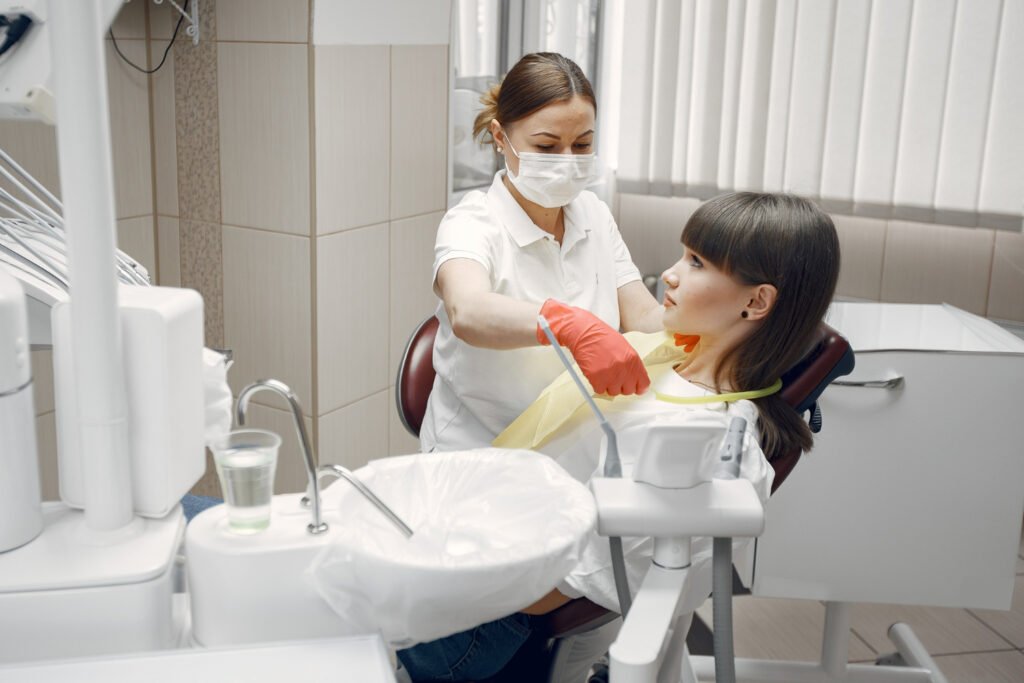
In this article
Why Dental Cleanings Are Essential for a Healthy Smile
Dental cleanings, or prophylaxis, are more than just about keeping your teeth white. These routine visits to the dentist are crucial in preventing tooth decay, gum disease, and a host of other oral health problems that can impact your overall well-being. The American Dental Association (ADA) recommends at least one dental cleaning per year, but many experts suggest a bi-annual visit for optimal health
Why so often? Because plaque—the sticky film of bacteria that forms on your teeth—can harden into tartar if not removed regularly. This tartar cannot be brushed away at home and requires professional intervention. Left unchecked, it can lead to cavities, gum disease, and even tooth loss. But that’s not all; oral health is deeply connected to your overall health. Gum disease, for instance, has been linked to conditions such as diabetes, heart disease, and stroke.
The Purpose and Benefits of Regular Dental Cleanings
Removing Plaque and Tartar: The primary goal of dental cleaning is to remove plaque and tartar buildup from your teeth and gums. Plaque is a breeding ground for bacteria, and if it hardens into tartar, it can lead to serious dental issues. Regular cleanings prevent this buildup and help maintain your oral health.
Preventing Gum Disease: Plaque buildup is a leading cause of gum disease. Regular cleanings help to prevent gingivitis (the early stage of gum disease) from progressing into periodontitis, a more severe form that can result in tooth loss.
Early Detection of Oral Health Issues: During your cleaning, your dentist or dental hygienist will also examine your mouth for any signs of oral health problems such as cavities, oral cancer, and other conditions that may not be immediately noticeable.
Improving Your Overall Health: Good oral hygiene is linked to better overall health. Dental cleanings reduce the risk of developing serious health problems like heart disease, diabetes, and respiratory issues.
Types of Dental Cleanings: Which One Is Right for You?
Not all dental cleanings are the same. The type of cleaning you need depends on the current state of your oral health. Here’s a breakdown of the most common types:
1. Prophylaxis Cleaning
This is the standard cleaning that most people receive during their routine dental visits. It involves removing plaque and tartar from the surfaces of the teeth and gums, helping to prevent cavities and gum disease.
2. Scaling and Root Planing
Also known as deep cleaning, this procedure is used when gum disease has developed. Scaling removes plaque and tartar from above and below the gum line, while root planing smooths the roots of the teeth, helping the gums reattach to the teeth. This type of cleaning is typically performed under local anesthesia to ensure comfort.
3. Full Mouth Debridement
This type of cleaning is recommended for individuals who have not had a dental cleaning in an extended period. It involves removing significant tartar buildup and is usually a precursor to a more thorough cleaning.
What to Expect During Your Dental Cleaning
Understanding what happens during a dental cleaning can help alleviate any anxiety and ensure you’re prepared for your appointment. Here’s a step-by-step guide:
1. Initial Examination
Your dental hygienist will begin by examining your mouth using a small mirror to check for any signs of gingivitis, cavities, or other concerns. If any major issues are detected, the dentist may be consulted before proceeding with the cleaning.
2. Removing Plaque and Tartar
Using a scaler, your hygienist will remove plaque and tartar from around your gum line and between your teeth. You’ll likely hear some scraping—this is perfectly normal and indicates that the tartar is being effectively removed.
3. Gritty Toothpaste Cleaning
After tartar has been removed, your teeth will be polished with a high-powered electric brush and a gritty toothpaste. This helps to remove any remaining plaque and leaves your teeth feeling smooth and clean.
4. Expert Flossing
Even if you floss regularly at home, professional flossing can help remove any leftover plaque or toothpaste from the earlier steps. It’s also an opportunity to identify any trouble spots where your gums may bleed.
5. Rinsing
You’ll be asked to rinse your mouth to remove any debris. This rinse may contain fluoride, which helps strengthen your teeth.
6. Fluoride Treatment
The final step is a fluoride treatment, which acts as a protective barrier against cavities. The fluoride may be applied as a gel, foam, or varnish and is usually left on your teeth for a minute
The Risks and Considerations of Dental Cleanings
While dental cleanings are generally safe and beneficial, there are a few considerations to keep in mind:
Sensitivity: If you have sensitive teeth, you may experience some discomfort during the cleaning. Inform your dentist or hygienist so they can take steps to minimize any pain.
Gum Bleeding: It’s not uncommon for your gums to bleed during or after a cleaning, especially if you have gum disease or if it’s been a while since your last cleaning.
Special Health Conditions: If you have certain health conditions, such as a heart condition or a compromised immune system, your dentist may recommend taking antibiotics before your cleaning to prevent any potential infections.
Beyond the Basics of Dental Cleanings
While the information above covers the essentials, there are additional tips and insights that can further enhance your dental cleaning experience:
Stay Ahead with Regular Visits: Regular dental visits ensure that any potential issues are caught early. This not only prevents the need for more invasive treatments but also saves you time and money in the long run.
Don’t Ignore Your Dentist’s Advice: If your dentist recommends more frequent cleanings, it’s for a good reason. Those with higher risks for gum disease or cavities may need to see their dentist every three to four months.
Invest in Your Oral Hygiene: Your home care routine plays a huge role in your oral health. Brushing twice daily, flossing regularly, and using mouthwash can reduce plaque buildup and make your dental cleanings quicker and more comfortable.
The Takeaway
Dental cleanings are a crucial component of maintaining good oral health and preventing more serious conditions down the road. Whether it’s a routine cleaning or a more in-depth procedure like scaling and root planing, these visits are essential to keeping your teeth and gums in top condition. Remember, your oral health is connected to your overall health, so don’t skip those dental appointments. By staying informed and proactive, you can ensure a lifetime of healthy smiles
A Quick Review
Dental cleanings are vital for maintaining oral and overall health. These routine procedures remove plaque and tartar, preventing tooth decay, gum disease, and serious health issues like heart disease. With different types of cleanings available—ranging from routine prophylaxis to deep cleanings—dental visits should be regular and tailored to individual needs. Incorporating professional advice and a solid home care routine ensures long-term dental health and saves on future costly treatments.
Frequently asked questionsay
1. How often should I get a dental cleaning?
Most dentists recommend getting a dental cleaning every six months to maintain optimal oral health. However, some individuals may need more frequent cleanings based on their specific needs.
2. Does dental cleaning hurt?
While some discomfort may be experienced, especially if you have sensitive teeth or gum issues, most dental cleanings are painless. Communicate with your dentist if you feel any discomfort.
3. Can dental cleanings remove stains from my teeth?
Yes, dental cleanings can help remove surface stains caused by food, drinks, and tobacco. However, deeper stains may require additional treatments like teeth whitening.
4. What is the difference between regular cleaning and deep cleaning?
Regular cleaning (prophylaxis) removes plaque and tartar from the surface of the teeth, while deep cleaning (scaling and root planing) targets the area below the gum line to treat gum disease.
5. Is fluoride treatment necessary after a dental cleaning?
Fluoride treatment is often recommended after cleaning as it helps strengthen tooth enamel and provides additional protection against cavities, especially in children and individuals at higher risk of decay.











